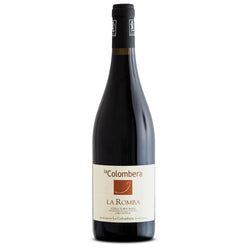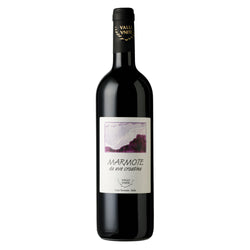Il vitigno Croatina ha origini certe che risalgono solo alla seconda metà dell’800, ma si trovano sue tracce nella Valle del Versa, nell’area di Roverscala, in Oltrepò Pavese, sin dal medioevo. La Croatina si è poi diffusa anche nel Veneto e in Sardegna, ma resta sostanzialmente una varietà in massima parte dell’area dell’Oltrepò Pavese e del Novarese e Vercellese.
In Piemonte la si può trovare anche nel Cuneese (in particolare nella zona del Roero, ancora sotto il nome di Bonarda) e nell’Alessandrino, soprattutto sui Colli Tortonesi. In Emilia-Romagna la coltivazione della Croatina è concentrata nel Piacentino, dove la tipologia Colli Piacentini Bonarda DOC la vede vinificata in purezza, mentre nel Colli Piacentini Gutturnio DOC è assieme alla Barbera.
Dal punto di vista ampelografico, la Croatina presenta un grappolo generalmente grande, conico, alato, allungato e di media compattezza. L’acino è medio, di forma sferica o sferoidale, regolare, con buccia, pruinosa, spessa e consistente, di colore blu chiaro.
Vinificata in purezza, la Croatina dà un vino amabile, fruttato e floreale, di buona alcolicità e sapore asciutto, di corpo e non molto acido. Viene spesso vinificata in abbinamento con altre varietà, come in Piemonte, la Bonarda e la Vespolina e nell’Oltrepò Pavese la Barbera e l’Uva Rara a cui la Croatina apporta colore e morbidezza.
Il vitigno Croatina ha origini certe che risalgono solo alla seconda metà dell’800, ma si trovano sue tracce nella Valle del Versa, nell’area di Roverscala, in Oltrepò Pavese, sin dal medioevo. La Croatina si è poi diffusa anche nel Veneto e in Sardegna, ma resta sostanzialmente una varietà in massima parte dell’area dell’Oltrepò Pavese e del Novarese e Vercellese.
In Piemonte la si può trovare anche nel Cuneese (in particolare nella zona del Roero, ancora sotto il nome di Bonarda) e nell’Alessandrino, soprattutto sui Colli Tortonesi. In Emilia-Romagna la coltivazione della Croatina è concentrata nel Piacentino, dove la tipologia Colli Piacentini Bonarda DOC la vede vinificata in purezza, mentre nel Colli Piacentini Gutturnio DOC è assieme alla Barbera.
Dal punto di vista ampelografico, la Croatina presenta un grappolo generalmente grande, conico, alato, allungato e di media compattezza. L’acino è medio, di forma sferica o sferoidale, regolare, con buccia, pruinosa, spessa e consistente, di colore blu chiaro.
Vinificata in purezza, la Croatina dà un vino amabile, fruttato e floreale, di buona alcolicità e sapore asciutto, di corpo e non molto acido. Viene spesso vinificata in abbinamento con altre varietà, come in Piemonte, la Bonarda e la Vespolina e nell’Oltrepò Pavese la Barbera e l’Uva Rara a cui la Croatina apporta colore e morbidezza.




